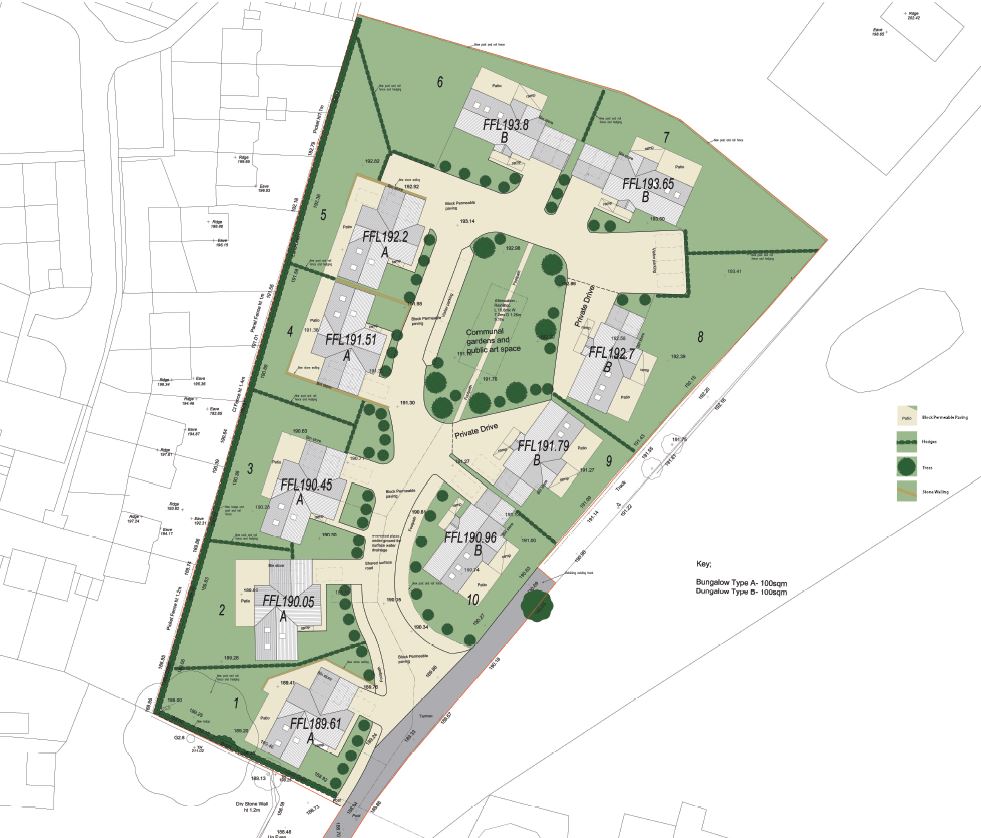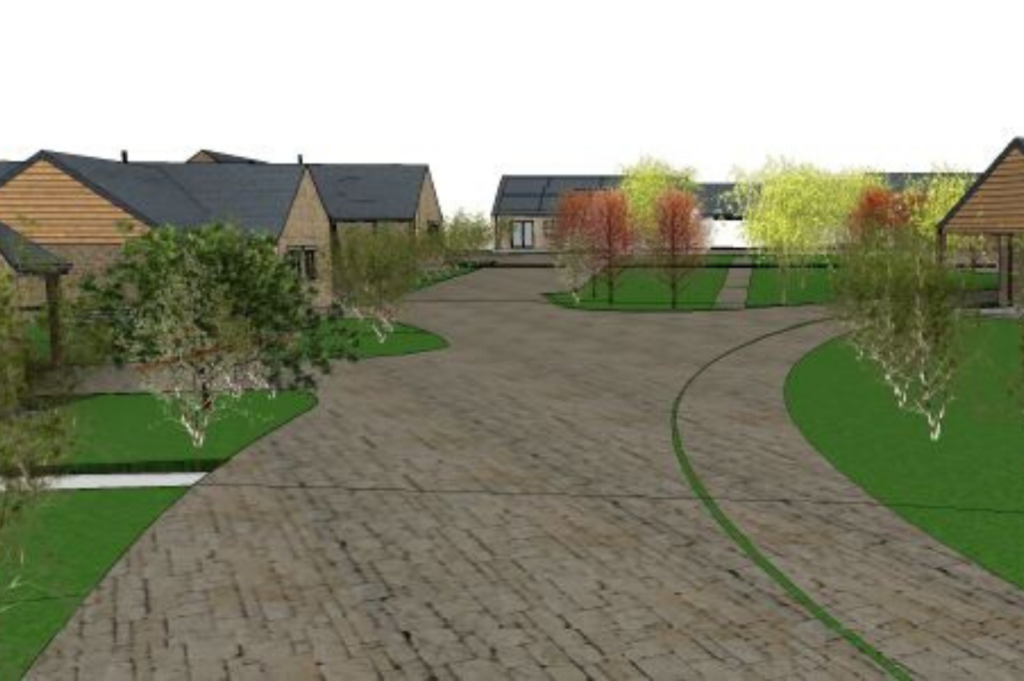Planning & Design Practice are pleased to have secured approval of Reserved Matters for a development of 10 houses in Ashover, after having originally secured the outline planning permission in 2017.
The outline planning permission restricts the approved development on the site to “bungalows” in the description of development, and also by a condition of the permission which states that “the dwellings hereby approved shall be single storey only.”
The design challenge then for this site was to create a scheme of single storey dwellings for this development that looked great and could be built to a high standard by our client who will be building the houses.
The design of the house types was carefully considered as well as the layout, and extensive pre-application discussions took place with North East Derbyshire District Council and also Urban Design at Derbyshire County Council.
The theme chosen for the site, in this edge-of-settlement location, was that of traditional agricultural buildings – in appearance and materials as well as in the courtyard-type layout.

Inspiration came from existing barn conversions and other rural developments that retain an agricultural character to the finished development, which is essential for a semi-rural location such as this. The building materials for the houses includes materials typical of vernacular rural buildings – stone, timber, and plain clay roof tiles (Staffordshire Blue is proposed to be in keeping with many of the traditional buildings in Ashover).

Another constraint to the development includes that the houses are required to meet the Building Regulations M4(3) standard – which is fully wheelchair accessible. This standard is specific in its dimensional requirements for access into the building, spaces in and around doorways for turning, around furniture, access to windows, storage space for wheelchairs, covered entrances, covered parking at wheelchair accessible size, level access, and bathroom dimensions amongst others.
Therefore it was necessary to design the layout for each house type to meet these stringent requirements whilst trying to maintain the generally linear nature of a converted rural building, to fit with the chosen design theme.
The layout of the site seeks to address social isolation and loneliness. The properties will have living areas to the front overlooking a communal open space with land for a communal garden, and residents will become members of a residents association. The properties and layout are designed to encourage social interaction with all properties overlooking the central access road and communal spaces:
The design of the site layout aims to create an informal courtyard feel, to represent the character of a farmyard through the relationship between the buildings. At the same time, consideration had to be given to access for a Bin Lorry, this involved ‘swept path analysis’ to be certain the vehicle could access the site safely and turn around at the end. Given that the permission for the development itself is for wheelchair accessible dwellings it is essential that the Refuse vehicle can access the full extent of the site, as any residents that are less mobile would find it difficult to take wheeled bins to a designated collection point if it were too far from the house.
The road further up into the site is designed as a shared surface and is proposed to be constructed of permeable block paving. Sections of footway (pavement) are proposed along the lower parts, as this can help the visually impaired be more confident in proximity to vehicles (especially with Guide Dogs).
Each house has its own covered parking area attached to the building, to disabled parking space standards, which is a requirement of the M4(3) standard, along with wheelchair storage areas, and access ramps to all external doors, with level access, and Bin Storage areas under cover. The M4(3) standard also requires that the main entrance is under a covered porch.
Social sustainability
The layout of the site includes a communal garden area in the centre, and this area is currently also earmarked as the location for a Public Art commission. This part of the site is overlooked by almost all of the new dwellings and will provide an active central space that all residents can use, whilst also providing a level of activity and interest to look out over in the neighbourhood for any residents that may struggle to leave the house at any time due to restricted mobility.
Communal areas encourage social interaction and by combining this with the public art, which will be owned by the residents association, it is hoped that this will foster a sense of community for the new residents and create a strong sense of place.
The Sculptor James Sutton has been chosen to produce the public art commission, after a selection process facilitated by Junction Arts. https://www.jamessutton.co.uk/
The communal gardens are located at the centre of the widest part of the site, actively overlooked by all but the southernmost house on the site (which can provide interesting social activity for those with restricted mobility or housebound to look out onto) and the gardens are easily accessible by all residents. A central footpath draws the eye up thought the centre of the gardens and between the two houses at the top end of the site, framing the view of the countryside beyond.
Biodiversity Enhancement
It is proposed to plant new hedgerows along some of the boundaries, consisting of mixed native species, which will provide a biodiversity enhancement for the site. Other boundaries are proposed to be post & rail fencing to maintain the rural character and keep the feeling of openness of the site. Post & rail is also proposed between the individual gardens, along with native mixed hedging to provide some privacy to the occupiers. There will be some sections of new dry-stone walling that are also of great benefit to wildlife, overall the boundary treatments are considered to be rural in character and not suburban, so will actually contribute to the landscape character of the area.

Project Team: Dominic Cooney, Tina Humphreys, George Henshaw



